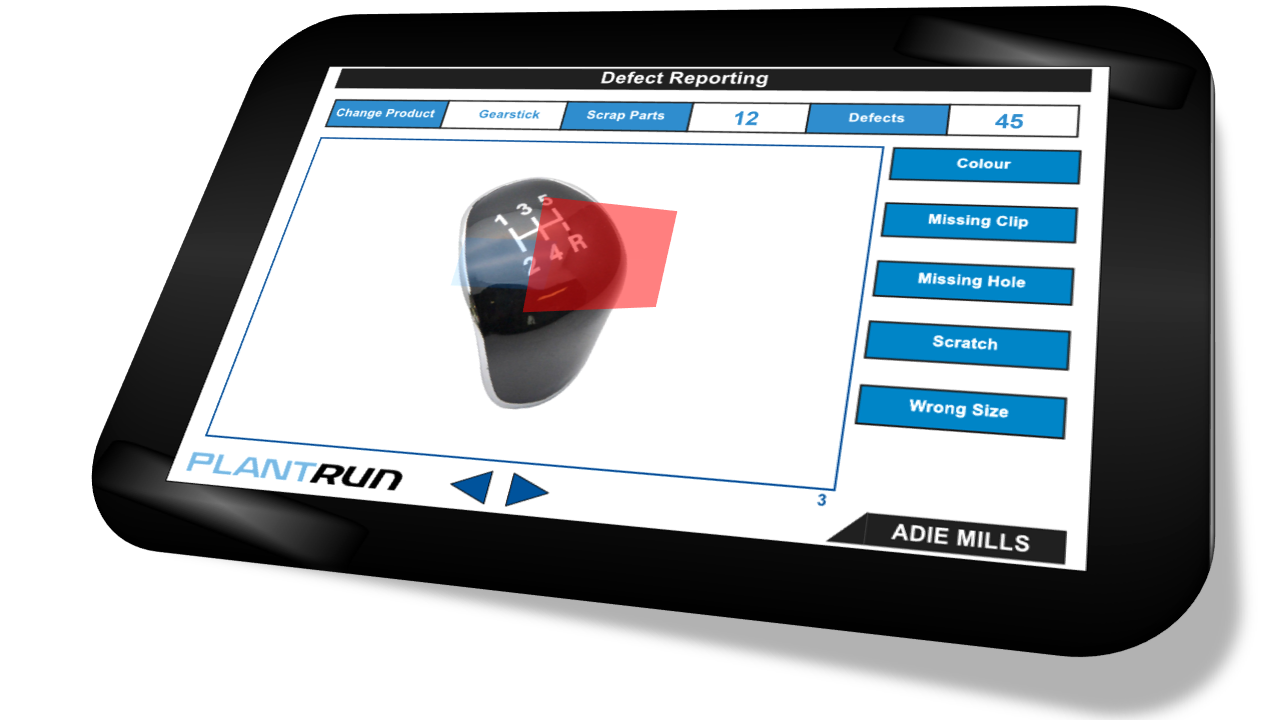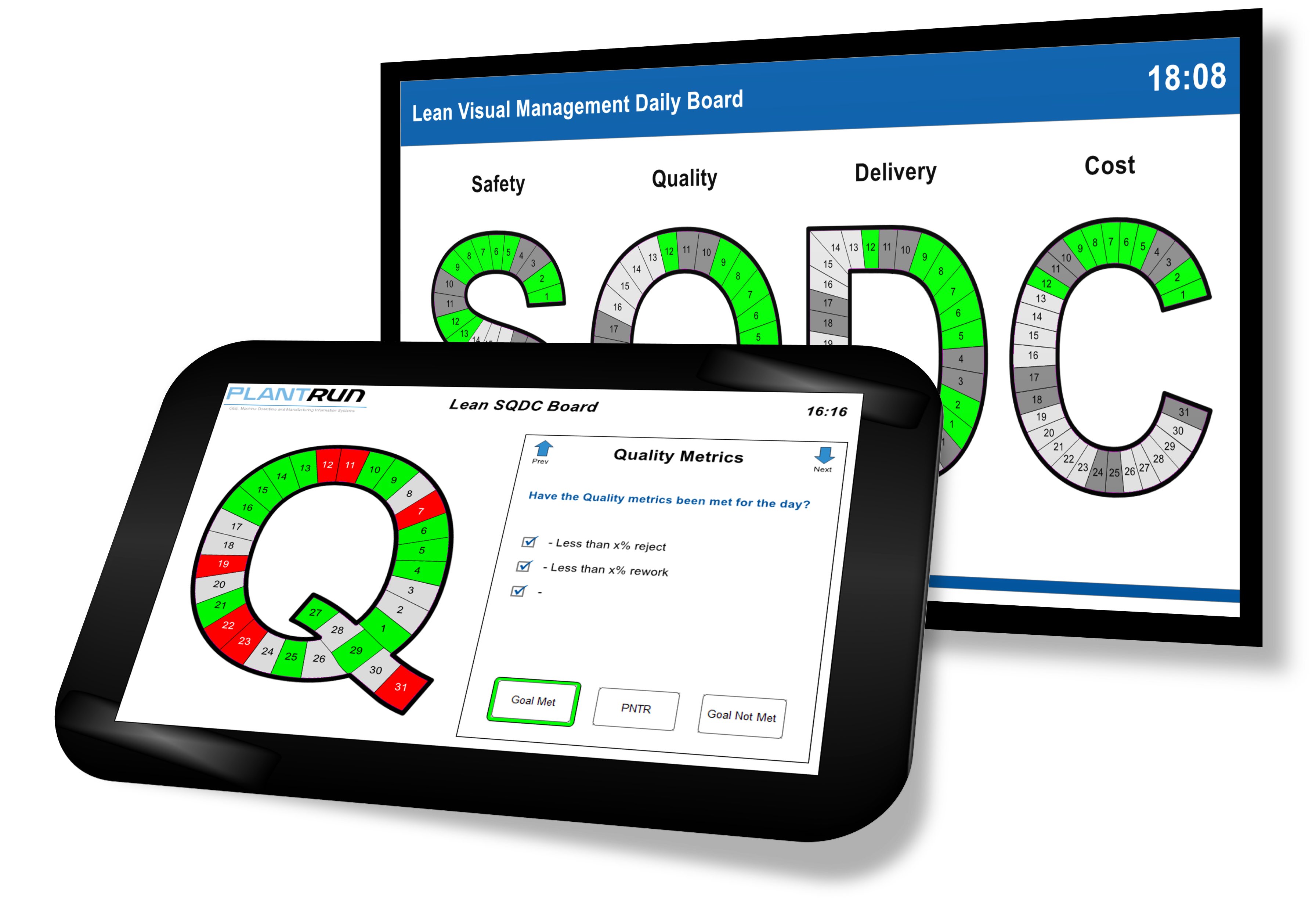Improving Quality through Process Improvement
Maximise Quality, Reduce Waste - Get the Most out of your Process
With energy costs rising, getting the most out of your production process is becoming more important than ever before. By tracking quality rates and having targeted data on the issues you have with it, you can start to make changes to reduce the amount of scrapped or reworked product.
Maximising Product Quality Through Real-Time Systems
Producing 'first time' high-quality products efficiently is crucial to business success. However, defects and quality issues continue to plague manufacturing, resulting in scrap, rework, recalls, and ultimately increased costs. Implementing a PlantRun real-time data system on the factory floor can help manufacturers improve quality control, reduce defects, and minimise waste.
Real-time data gives visibility into the manufacturing process, allowing issues to be identified rapidly. By leveraging real-time analytics, manufacturers can categorise scrap and rework, track defects, incorporate quality metrics, and continuously improve processes. The result is faster response times, increased productivity, reduced costs, and higher quality products.
Categorising Scrap and Rework in Real-Time
Scrap and rework are some of the biggest sources of waste in manufacturing. When an issue arises and finished products are found to be defective, those products must be reworked or scrapped, incurring additional time and costs. PlantRun tracks the number of poor-quality products and these can be categorised with different types of defects in real-time and you gain valuable data that provides insights into quality issues.
By correlating scrap and rework data, manufacturers can identify systemic issues leading to defects. For example, if a high number of products from a particular workstation are being scrapped for the same reason, it signals a need to troubleshoot that process.
Having granular, real-time scrap data is invaluable for root cause analysis. Digging into the specifics of each quality issue allows corrective and preventive action to be taken to address the source of defects. This real-time feedback also allows for continuous improvement by identifying problem areas quickly.

Defect Reporting and Tracking
While categorising scrap provides useful quality data, even more can be learned by tracking all defects through the entire manufacturing process. Real-time defect tracking allows production personnel to immediately log an issue as it arises. This creates full traceability for each defect, providing transparency into the quality status.
Operators can input defect data through stations on the production floor. Issues can be logged with details like time, line number, process step, defect type, defect position etc. Entering serial numbers link the defect reports to each unique product. As items move through production, the tracking system compiles a record of all defects.
By analysing defect data together, rather than in silos, manufacturers can identify patterns and sources of issues. For example, a cluster of defects from the paint shop may indicate a problem with the sprayers. Or electrical testing logs may show a high failure rate for a particular component. This helps target quality improvements to the specific processes needing intervention.
Proactive defect analysis using real-time data minimises reactionary responses and encourages the addressing of underlying root causes. Defects can be prevented through data-driven improvements rather than simply inspecting quality at the end.

Incorporating SQDC Metrics
To maximise the impact of real-time defect data, it helps to incorporate it into broader quality management metrics. Common key performance indicators (KPIs) for quality include:
- Scrap Rate = Percentage of products scrapped
- Rework Rate = Percentage of products requiring rework
- Defect Rate = Number of defects identified per unit
- Customer Rejects = Number of customer complaints or returns
Tracking these rates in real-time provides live visibility into quality performance and flags any spikes immediately. PlantRun can calculate SQDC metrics on the fly using all the defect and scrap data being gathered. Production managers can monitor dashboards with live KPIs. Manual data collection and paperwork can be eliminated.
By digging into the categories and specifics driving changes in these metrics, root causes of quality issues are revealed. For example, an uptick in scrap rate may be traced back to a motor component defect coming from a particular supplier. This linkage allows for data-driven corrective actions.
Real-time SQDC measurement aligns objectives around quality. All levels work to minimise scrap, rework, defects, and customer issues. This creates a culture of accountability for defect prevention rather than reaction.

Benefits of Real-Time Quality Data
Implementing real-time data analytics delivers significant benefits for manufacturing quality and efficiency:
- Faster response time to quality problems since they are identified as soon as they occur, reducing further waste.
- Increased productivity and throughput by minimising unplanned downtime, scrap, and rework.
- Lower costs through defect prevention and reduced quality-related expenses.
- Tighter process control from the continuous flow of data at each production step.
- Continuous improvement, as issues are addressed at source rather than just inspected at the end.
- Increased customer satisfaction and loyalty through higher and more consistent product quality.
- More insightful decision making driven by data rather than hunches.
Real-time quality data analytics provides manufacturers with a powerful advantage in today's highly competitive, quality-focused environment. PlantRun categorises scrap, tracks defects, and monitors critical SQDC metrics in real-time so manufacturers can achieve new levels of quality, efficiency, and competitiveness.
PlantRun enables companies to respond faster to quality issues, tighten process control, drives continuous improvement, and maximise overall quality. By digitising their quality management, they can assure both productivity and perfection. This positions them to better meet rising customer expectations.